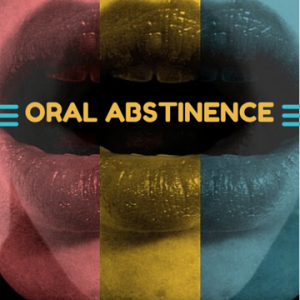The current issue of the American Journal of Sexuality Education is a special, themed issue on abstinence. One of the articles, “Abstinence, Sex, and Virginity: Do They Mean What We Think They Mean?” by Jason Hans and Claire Kimberly, includes an analysis of what teens and professionals mean by “sex” and “abstinence”. Below is the abstract and selected tables. The complete article is available for purchase here. And the table of contents for the special issue can be found here.
Abstract
Ambiguous definitions concerning which behaviors constitute sex, abstinence, and virginity may lead to arbitrary interpretations of meaning or miscommunication, which could be particularly problematic in health care, educational, and research contexts. The purpose of this study was to examine and compare definitions of sex, abstinence, and virginity between samples of 454 university students and 126 AASECT-certified sexuality professionals. Compared to the AASECT professionals, students were less likely to classify 10 of 11 behaviors as sex, they were more likely to indicate that oral-genital contact maintains one’s virginity, and they were more likely
to indicate that oral-genital contact and hand-genital contact is consistent with abstinent behavior. Relative to previous studies, these findings also suggest that conceptualizations of abstinence and the classification of oral-genital contact may be changing among young adults. Overall, the primary implication of these findings is that sexual health professionals should be mindful of the interpretative latitude afforded to individuals when using terms intended to refer to a range of sexual behaviors rather than explicitly identifying the targeted behaviors.
|
Table 1. Percentage of respondents indicating that vaginal intercourse, anal intercourse, oral-genital contact, and genital touching is abstinent behavior, maintains virginity, or is not sex.
|
|||||
|
Study
|
N
|
Vaginal Intercourse
|
Anal Intercourse
|
Oral-Genital Contact
|
Genital Touching
|
|
Abstinent Behavior
|
|
|
|
|
|
|
Bersamin et al. (2007)
|
480
|
11.9
|
14.3
|
33.4
|
44.2
|
|
Horan et al. (1998)
|
1,101
|
10.2
|
24.3
|
36.9
|
61.2
|
|
Maintains Virginity
|
|
|
|
|
|
|
Bersamin et al. (2007)
|
453
|
5.8
|
16.1
|
70.6
|
83.5
|
|
Carpenter (2001)
|
61
|
0.0
|
44.0
|
72.1
|
–
|
|
Not Sex
|
|
|
|
|
|
|
Bogart et al. (2000)
|
223
|
6.5
|
7.3
|
56.4
|
–
|
|
Gute et al. (2008)
|
463
|
0.0
|
19.2
|
60.3
|
84.3
|
|
Hans et al. (2010)
|
477
|
2.5
|
20.2
|
80.7
|
88.5
|
|
Sanders & Reinisch (1999)
|
599
|
0.5
|
19.0
|
59.9
|
85.5
|
|
Table 3. Percentage of the definitions given on sex, abstinence, and virginity
|
||
|
Descriptions
|
Students
(n = 409)
|
Professionals
(n = 111)
|
|
Abstinence
|
|
|
|
No penile-vaginal intercourse
|
56
|
29
|
|
No heterosexual penile-anal intercourse
|
43
|
16
|
|
No homosexual penile-anal intercourse
|
41
|
17
|
|
No oral-genital contact
|
20
|
14
|
|
No sexual arousal
|
12
|
20
|
|
No genital contact (vaginal or penile)
|
11
|
29
|
|
Waiting until marriage
|
6
|
2
|
|
No anal contact
|
5
|
12
|
|
No fondling breasts
|
5
|
5
|
|
No pregnancy
|
2
|
7
|
|
No orgasm
|
2
|
2
|
|
A subjective experience
|
0
|
13
|
|
STI/STD prevention
|
0
|
3
|
|
Virginity
|
|
|
|
No penile-vaginal intercourse
|
84
|
76
|
|
No heterosexual penile-anal intercourse
|
48
|
36
|
|
No homosexual penile-anal intercourse
|
48
|
41
|
|
No oral-genital contact
|
3
|
9
|
|
Pure and/or innocent
|
3
|
2
|
|
No genital contact (vaginal or penile)
|
2
|
5
|
|
No sexual arousal (no sexual behavior or activity)
|
1
|
4
|
|
Socially constructed term
|
0
|
6
|
|
No orgasm
|
0
|
4
|
|
Sex
|
|
|
|
Penile-vaginal intercourse
|
89
|
34
|
|
Heterosexual penile-anal intercourse
|
55
|
21
|
|
Homosexual penile-anal intercourse
|
54
|
21
|
|
Oral-genital contact
|
10
|
32
|
|
Genital contact (vaginal or penile)
|
5
|
39
|
|
Orgasm
|
2
|
5
|
|
Sexual arousal (sexual behavior or activity)
|
1
|
19
|
|
Anal contact
|
1
|
8
|
|
Fondling breasts
|
0
|
4
|
|
A subjective experience
|
0
|
4
|
|
Masturbation
|
0
|
3
|






